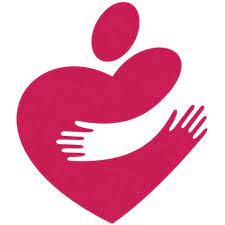Well, we’re coming up on the end of January and it’s time to take a look at how well we’re coming along on our New Year’s resolutions. I make them every year, (although I don’t write them down – too embarrassing later).
Which ones are you all keeping, and which ones are proving to be a real pain?
The act of making resolutions is perhaps one of the things that helps characterize us as the intrepid people we are. Americans are never happy with the status quo, but we were not the first to do this dance every year. Not only is this a practice in both western and eastern hemispheres, it has been around for a long time.
According to The Guardian, Romans would kick off each new year making pledges to their god Janus (from which the name January comes), and the Babylonians would vow to “return borrowed objects and repay their debts at the start of each year.” Read here.

Given the current debt level, good luck with that, and good thing I’m not Babylonian. Maybe I could resolve to pay off my debts in about 10 years, but certainly not by the end of this year.
Probably the most popular resolution every year, and my personal favorite, is to lose weight. Sadly, according to a University of Scranton survey cited in Cosmopolitan, “only 8 percent of people achieve that goal every year.” Actually, losing weight might be the most useless goal to make at the first of the year. Winter is a time when the body naturally holds on to weight to keep itself warm. Lisa C. Cohn, President of Park Avenue Nutrition, and a licensed, registered dietitian, explains that your metabolism actually speeds up in the winter, because keeping warm takes more energy (burning more calories) in cold weather.
According to Cohn, if you just stick to regular exercise and eat “right,” you should lose weight naturally through winter, maybe even those five to seven pounds you put on over the holidays. Those extra pounds are brought on by holiday stress which increases levels of cortisol, which stimulates the release of glucose into your blood.
Now that your body is suddenly famished, due to depleted glucose stores, you’re craving sugar in the worst possible way – the holiday cranberry bliss bars and mocha lattes at Starbucks, kind of way. Once the stress and overeating of the holiday has ended, appetite “should” return to normal, and weight, in bits and pieces, can fall on its own.
Obtainable goals
First things first, check with your doctor, always. Next, choose small, obtainable goals. You may need to lose 100 pounds, but it’s much better to chip away at that, about 10 pounds at a time. Learn what works and what doesn’t. Develop a new way of eating vs. dieting. Dieting is characterized by deprivation, where as “way of eating,” conjures up excitement in trying new foods prepared in different ways. “Yo yo” dieting is so hard on your body. Make this the last time.
Probably the most important thing you can do for your waist line and your health is to significantly decrease your consumption of white flour and white sugar. These substances, known to cause inflammation in the body, are precursors to diseases such as diabetes, which is a killer in a really nasty way.
When you eat a cupcake, if you’re not running a marathon at that exact time, it turns into fat almost immediately. Stored fat affects your insulin levels, which in turns causes type II diabetes. This is the disease that drastically skyrockets your chances of stroke, heart attacks, renal failure and amputation of your extremities – not worth that cranberry bliss bar, no matter how good it is.
With losing weight is the flip side of the coin, getting in shape, or exercise. Usually this comes in the form of gym memberships which fall by the wayside come the end of February. Exercise is always a good idea, if only to keep your body limber and moving, but going to extremes is seldom worth it, especially when you start injuring yourself.
Most people in the know recommend finding a simple exercise regimen you can do at home, using simple equipment like free weights, which strengthen your long muscles (arms and legs), raising your metabolism. Couple that with a simple walking program where you can total about 10,000 steps, or 5 miles a day. Of course this doesn’t have to be done all at once. According to an article in Fitness, most people walk about 3 to 4,000 steps a day in the course of normal events, so it just becomes a matter of fleshing out the rest over lunch or when you get home from work.
Smoking cessation (or maybe vaping), is the traditional second on the list. If you don’t smoke, or vape, don’t start, is all I can say. Both of these actions are chronic irritations to your lungs, which lead to devastating disease later on. As a respiratory therapist, and an ex-smoker, I’ll admit it’s hard to quit, (although to me, never as hard as eliminating sugar).
The reason is the highly addictive nature of nicotine, which some feel is at least as addictive as cocaine. Nicotine, when it hits your brain, makes you feel so very good, stress and other bad feelings fade away. But, if you can divert your attention, the craving will subside pretty quickly. Anything can help – pick up a magazine, change the station on the TV, get up and go to another room.
The craving stimulus will subside very quickly, if you let it. If you truly enjoy smoking, though, and many people do, you’ve got a hard row to hoe and may have to get your doctor to help. I wanted to quit, so I eliminated places where I smoked – my house, my car, etc. When I got down to about four cigarettes a day, it became too much trouble to fool with.
Reduce debt, save money
Two more popular resolutions are to get out of debt and save money. If you find an easy way to do it, let me know. According to Kayla Webley, in an article in Time magazine, financial planners advise making a specific budget, and sticking to it, rather than reaching for unattainable goals. You are advised to eliminate unnecessary spending, such as eating out.
Shopping around for insurance and credit cards with lower rates and free balance transfers can help, then putting what you’ve saved, plus an extra bit of money, in to pay off long-range debts, like mortgages or student loans every month will help. Once higher interest debts are paid off, concentrate on the next highest interest debt.
Hard to do, especially after December’s drain on your wallet for gifts, as well as other large payments, like property taxes. One suggestion my credit card company made to me was to make my payments as early in the month as possible, thereby lowering the balance that the interest is charged on. They suggest not making the basic payments, but to try to double them, if possible, or at least add something more to them each month. Leave yourself wiggle room, though, so an emergency doesn’t have you using your credit cards to make ends meet.
With that in mind, one way to avoid end of the month emergencies is to get the medical CareCredit card, which allows you to defer interest on a medical purchase if paid off within a certain amount of time. This can be a great help, especially if you have animals, because you can get done what you need to, and not have to worry about putting the cost on an already over-stressed regular credit card. If you have a bad tooth, sprain your ankle, get the flu, an animal comes up sick or lame, etc., you can go ahead and get it taken care of, and then space out monthly payments, interest free for a period of time.
Saving money is the flip side of paying off debt. The ability to save money is directly proportional to the amount of debt and the amount of interest you’re paying. Suffice it to say, if you could take your yearly interest payments and sock them into a Roth IRA, you’d be a whole lot happier. Even putting back a minimal amount, say $25 a month will at least make you feel better, and maybe make paying those end of year bombs, like property taxes, a little easier.
One of the most important things about making resolutions is to make sure they are doable. Re-shaping them into things you can easily do vs. those that require a lot of outside input helps.
Truly, exercising every day is a lot easier to do at home instead of going to a gym. In this country, about one in three of us, on a yearly basis, resolve to make ourselves better in some way. About 75 percent of us manage to stick to these goals for about a week, but sadly less than half of us are still making progress six months later, and it affects our self-esteem.
Take home lesson – make it realistic and don’t bite off more than you can chew.
Lyn Hacker is a Lexington native raised by Appalachian parents to be not only educated but proficient in the living arts – working very hard, playing music, growing gardens, hog farming, orchard management and beekeeping. The UK graduate has been a newspaper staff writer and production manager, a photography lab manager, a Thoroughbred statistics manager, a Bluegrass singer and songwriter, a registered respiratory therapist, a farmer, a Standardbred horsewoman, a Red Barn Radio promoter and a beekeeper. She lives on a farm in Sadieville.






















